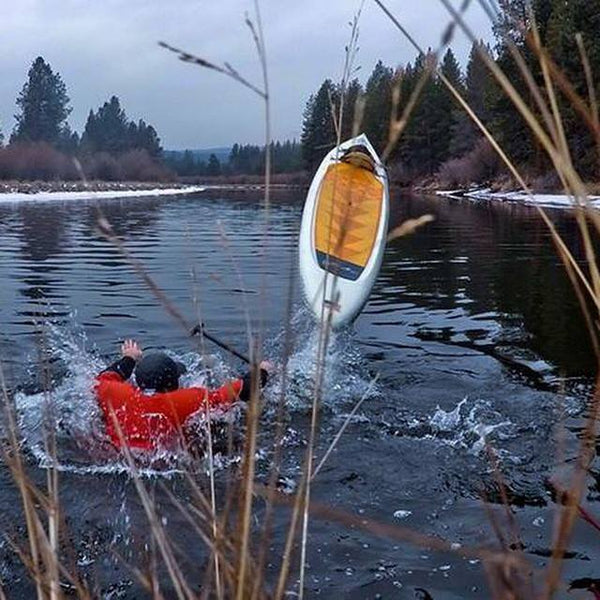
How to Safely Fall Off a Paddle Board
Falling off your paddle board is bound to happen, whether you're a beginner or an experienced paddler. It’s part of the adventure and can even be a fun part of learning.

Falling off your paddle board is bound to happen, whether you're a beginner or an experienced paddler. It’s part of the adventure and can even be a fun part of learning. However, knowing how to fall correctly can help you avoid injuries and make your paddling experience more enjoyable. Here’s a guide on how to safely fall off your paddle board.
1. Keep Your Distance from the Board
When you feel yourself starting to fall, your first instinct should be to push away from your board. Your paddle board is large and hard, and falling onto it can result in bumps and bruises. By distancing yourself from the board, you minimize the risk of injury from impact.
2. Avoid Diving
It's important to fall in a way that avoids diving headfirst into the water. Instead, aim to fall flat, landing on your side or back. This technique helps spread the impact across a larger area of your body, reducing the chances of injury.
Tip: Always try to lead with your butt rather than your head when falling. This helps ensure a shallower fall and protects you from potential underwater hazards.
3. Manage Your Paddle

As you fall, ensure that your paddle slices through the water rather than hitting it flat. Hold your paddle in a way that the blade or handle enters the water first. This reduces the risk of the paddle pulling your arm in an awkward direction or getting left behind.
Tip: Proper paddle management can help you avoid arm injuries. A smooth entry into the water with the paddle reduces resistance and makes the fall less jarring.
4. Resurface Safely
When you come back to the surface after falling, lead with your hand. This allows you to feel for obstacles and avoid hitting your head on your board or other objects. Many injuries occur during resurfacing, so be cautious and move slowly.
Tip: Using your hand as a guide when resurfacing helps you assess the environment above you, ensuring you come up in a clear spot.
5. Climb Back on Your Board
After falling, you’ll need to get back on your board. Approach the board from the center point, usually marked by the handle. Use this as a reference to pull yourself up. Place your paddle on the board and use it for balance as you get back into a standing position.
Tip: If you fall in an area with waves, stay low and paddle with your arms to move out of the impact zone. Once you’re in a safer spot, you can stand up and paddle normally.
Additional Safety Tips
- Stay Alert: Always be aware of your surroundings, including other paddlers, swimmers, and potential obstacles.
- Use a Leash: A leash keeps your board close by if you fall, preventing it from drifting away or becoming a hazard.
- Inspect Your Gear: Regularly check your board, paddle, and leash for any damage to ensure they’re in good working condition.
- Wear a Life Jacket: A life jacket is an essential safety item that can save your life, especially in rough waters or if you’re not a strong swimmer.
Final Thoughts

Falling off your paddle board doesn’t have to be a negative experience. By learning how to fall safely, you can protect yourself from injuries and make your time on the water more enjoyable. Practice these tips and techniques regularly to build your confidence and improve your paddle boarding skills.
Remember, every fall is an opportunity to learn and grow as a paddler. Embrace the experience, stay safe, and most importantly, have fun out there! Paddle boarding is a fantastic way to enjoy nature, get some exercise, and explore new places. With the right techniques and safety measures, you can make the most of every adventure.

